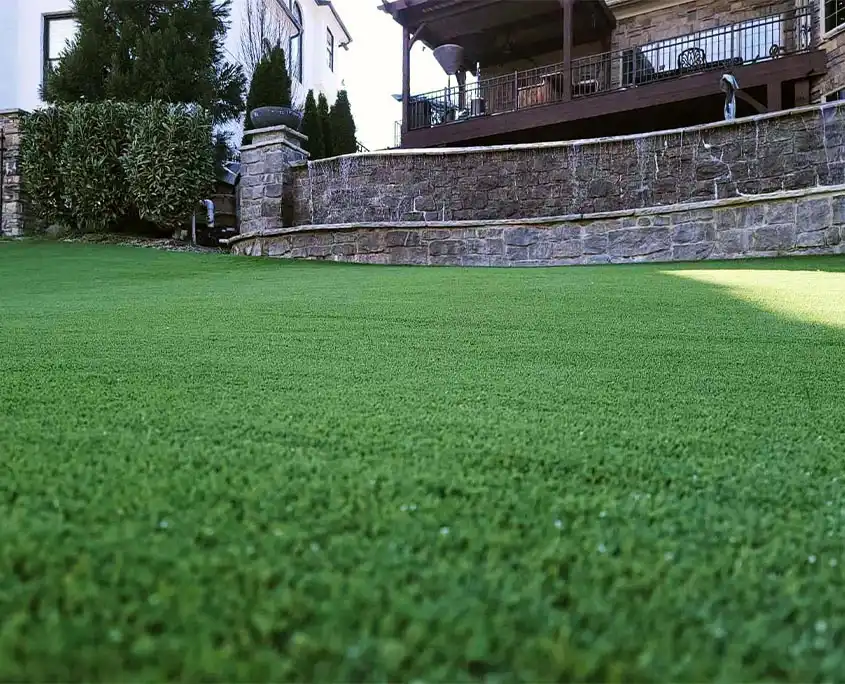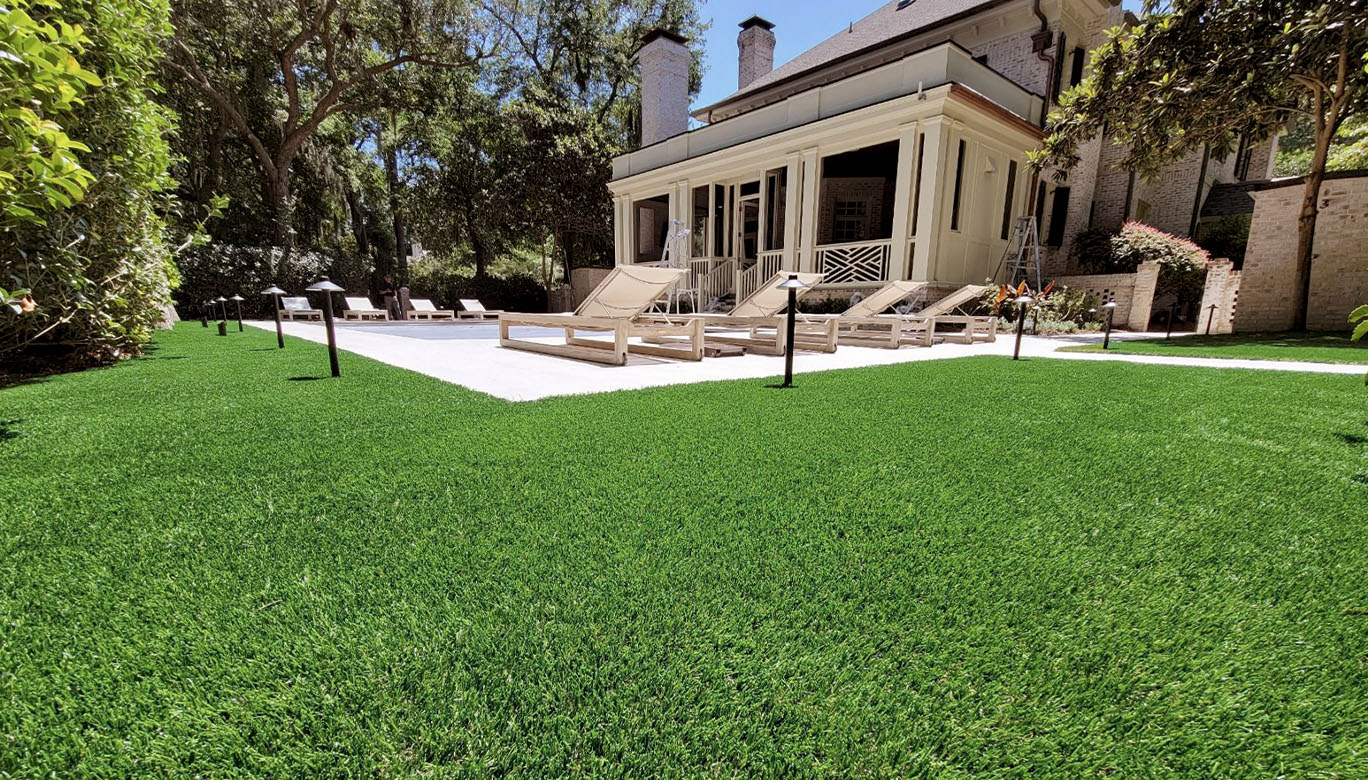Durable Arizona Artificial Turf for Residential and Commercial Applications
Durable Arizona Artificial Turf for Residential and Commercial Applications
Blog Article
Delve Into the Environmental Perks of Opting for Synthetic Grass Solutions
The fostering of synthetic grass options provides a compelling possibility to resolve pushing environmental difficulties. By significantly decreasing water usage and minimizing the application of dangerous chemicals, these choices not just promote sustainable landscaping but additionally shield neighborhood ecosystems. The reduced carbon footprint associated with lowered upkeep tasks contributes to a more lasting strategy to land administration. Nevertheless, the effects of these advantages prolong beyond plain conservation efforts, elevating concerns concerning their lasting effect on habitat conservation and overall ecological balance. Discovering these measurements reveals a complicated interplay worth considering.
Water Conservation Advantages
One of the most substantial advantages of man-made grass is its capability to conserve water. In comparison, fabricated grass does not need watering, considerably lowering the total need for water resources.
By eliminating the demand for regular watering, fabricated grass adds to sustainable landscape practices and helps minimize the ecological impact of excessive water intake. Furthermore, the preservation of water prolongs to the reduction of overflow, which can bring about soil disintegration and waterway air pollution.
Furthermore, the setup of man-made turf enables homeowners and communities to allot water sources extra efficiently, concentrating on necessary usages such as drinking water and farming. The change in the direction of synthetic grass not just advertises liable water use however additionally straightens with more comprehensive ecological goals targeted at protecting natural deposits.
As communities progressively prioritize sustainability, the water preservation benefits of man-made grass provide a compelling instance for its fostering in industrial and domestic landscape design tasks.
Reduced Chemical Usage
The transition to artificial lawn substantially lowers the reliance on chemical treatments generally utilized in natural turf upkeep. Standard turf management generally involves the application of pesticides, plant foods, and herbicides to promote development and control insects. These chemicals can posture dangers to human health, regional wildlife, and the atmosphere, adding to soil and water contamination.
In comparison, artificial grass eliminates the need for these unsafe substances. By lessening the release of artificial compounds into the community, synthetic lawn advertises much healthier dirt and water systems.
Moreover, the lack of chemical drainage associated with synthetic turf setups aids protect local rivers from pollution, supporting aquatic life and maintaining biodiversity. Artificial turf companies phoenix. As areas significantly focus on lasting practices, choosing man-made grass provides a viable service that aligns with environmental preservation goals. With this shift, building proprietors can take pleasure in lavish environment-friendly areas without jeopardizing environmental health and wellness, leading the way for a much more lasting future
Lower Carbon Footprint

In addition, the setup of synthetic grass can cause significant straight from the source water preservation. Natural yards call for considerable quantities of water for irrigation, which not just contributes to the carbon footprint linked with water removal and treatment but additionally stress regional water resources. In contrast, synthetic grass needs marginal upkeep, calling for no watering, therefore significantly lowering water usage and its linked power prices.
In addition, the long life of synthetic lawn contributes to its reduced carbon impact. With a life-span of up to 15 years or more, the demand for frequent replacements is decreased, resulting in much less waste and reduced energy usage in manufacturing and taking care of typical grass alternatives. Generally, synthetic turf offers a sustainable option for ecologically mindful landscaping.
Environment Preservation
Habitat conservation is a crucial factor to consider in the debate over landscaping options, particularly when comparing synthetic grass to all-natural turf. Natural lawn yards usually require substantial upkeep, including the usage of pesticides, plant foods, and herbicides, which can detrimentally impact neighborhood environments. These chemicals can seep into the soil and rivers, harming native flora and fauna and disrupting regional environments.
In comparison, synthetic grass provides an opportunity to decrease the environmental impact of landscape design. By selecting artificial turf, homeowners can minimize the interruption of natural habitats connected with standard grass care methods. Artificial grass removes the requirement for dangerous chemicals, thus securing neighboring wildlife and maintaining the stability of surrounding communities. Furthermore, the installment of synthetic grass can lead to the conversion of previous grass areas into even more biodiverse landscapes, such as pollinator gardens or native plant areas, which can sustain local wildlife.
Ultimately, the shift to fabricated grass not just saves water and reduces maintenance initiatives however also cultivates an extra harmonious connection between human tasks and the native environment, advertising environment preservation while doing Phoenix turf companies so.
Long-Term Sustainability
Long-lasting sustainability is an important consider examining the benefits of synthetic grass over standard grass lawns. Among the most considerable benefits of synthetic grass is its toughness; it can last up to 15-20 years with minimal maintenance, whereas all-natural lawn calls for constant reseeding and replacement. This durability decreases the demand for consistent sources, such as water, fertilizers, and chemicals, which are important for preserving a healthy and balanced yard lawn.
Furthermore, synthetic turf adds to a reduction in carbon discharges related to lawn treatment equipment. Conventional lawns often call for gas-powered mowers, leaners, and blowers, all of which contribute to air pollution. Artificial turf companies phoenix. In contrast, synthetic grass removes the requirement for such devices, advertising a cleaner environment
In addition, the manufacturing of fabricated turf progressively utilizes recycled products, improving its sustainability account. As suppliers embrace environmentally friendly practices, the ecological impact of fabricated grass proceeds to diminish.

Final Thought
The fostering of synthetic grass options provides significant environmental advantages, including significant water preservation, decreased dependence on hazardous chemicals, and a lower carbon impact. Man-made grass aids in preserving natural habitats by minimizing land disturbance and advertising long-term sustainability via the usage of durable products. Jointly, these factors underscore the possibility of synthetic grass to add favorably to environmental health and wellness and supply a practical choice to typical landscaping methods in a progressively resource-conscious world.
In comparison, man-made grass does not need watering, considerably decreasing the overall demand for water sources. By reducing the launch of artificial compounds right into the ecosystem, man-made grass advertises healthier soil and water systems.
Additionally, the installment of fabricated turf can result in considerable water conservation. In contrast, synthetic lawn needs minimal upkeep, needing no watering, consequently dramatically lowering water use and its linked energy prices.

Report this page